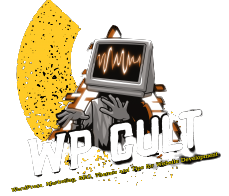Guest Post
Social Media: It’s Time Marketers Start 6 Facebook Marketing Strategy

Introduction:
After years of aimlessly chasing fans, it’s time marketers start driving real business results from Facebook. This requires building a Facebook page that has a clear focus and offers value to customers, leveraging the entire Facebook  tool kit, and integrating Facebook into a broader marketing strategy. To accomplish this, interactive marketers must be both an “oracle” who teaches their organization about Facebook and a “gatekeeper” who manages access to the platform. As marketers mature with the social network and Facebook increases its commitment to brands, together they will revolutionize the advertising industry.
tool kit, and integrating Facebook into a broader marketing strategy. To accomplish this, interactive marketers must be both an “oracle” who teaches their organization about Facebook and a “gatekeeper” who manages access to the platform. As marketers mature with the social network and Facebook increases its commitment to brands, together they will revolutionize the advertising industry.
Marketers haven’t cracked the Facebook code:
From toppling governments to inspiring award-winning films to bring long-lost family members together, Facebook is often the center of attention. And marketers are swarming to it like moths to a flame: 96 of the top 100 advertisers now use the site. Yet while millions of people have “liked” brand pages, most marketers fail to derive value from those relationships. In fact, engagement rates on brand pages are declining rather than increasing. The result? Believe it or not, most marketers don’t even see Facebook as their best option to drive audience engagement (see Figure 1). Marketers are failing to use the platform to its full potential because:
- They lack focus. In their race to start a Facebook page, many marketers forgot an integral step: setting clear objectives. Now they’re left with Facebook pages that have no purpose other than collecting “likes.” This lack of objectives not only hurts from a business perspective but also means that fans don’t get any real value from liking the brand.
- They don’t understand the platform. Facebook is unlike any platform marketers have ever seen — it’s like a miniature Internet with its own set of rules. EdgeRank, Facebook’s system for deciding which content appears in the newsfeed, is similar to search engine optimization (SEO) but requires a different kind of optimization. Facebook Ads are a cross between banners and paid search — and don’t quite follow the conventions of either. Marketers struggle not only to understand each of these pieces individually but also how they work together and how they’re evolving.
- They don’t have the right resources in place. Facebook doesn’t cost as much in money as it does in manpower — but many marketing organizations don’t have appropriate manpower in place — the dedicated people or the content development and sharing processes needed to be successful.
- They seek the wrong measurements. Marketers say that measuring return on investment (ROI) is their biggest challenge in social media, and measuring Facebook is no exception. Too many marketers ask “What is the value of a fan?” and not enough marketers understand their fans’ value in terms of loyalty and influence or Facebook’s impact on their business. Marketers won’t be able to prove value until they begin to ask the right questions.
Facebook Hasn’t Made Brands a Priority
Just as marketers have struggled to use Facebook properly, Facebook has struggled to help them succeed. In fact, for a company that relies on advertising revenues, Facebook hasn’t done much to make life easier for advertisers:
- It does not make content management easy. Marketing on Facebook requires a constant flow of content. Yet marketers aren’t set up to be publishers — and Facebook offers only limited options for managing multiple pages or handling multiple languages. Coca-Cola experienced this downside when Portuguese-language content accidentally appeared on its US page, inciting some users to respond with hate speech on a page that promotes happiness.

- It constantly changes the rules without warning. Facebook’s frequent and unilateral policy changes make it difficult for marketers to trust and invest in the platform. Just ask any pharmaceutical company: When Facebook recently removed the ability to disable user comments, it put the pharma companies at direct risk of violating government regulations and ultimately forced many to shutter their Facebook pages.
- It offers marketers limited data. Facebook is one of the only major websites that doesn’t allow third-party ad tags. Not only does that force marketers to rely on Facebook-provided data that one social analytics executive described as “lightweight,” but it means marketers can’t compare Facebook campaigns with other channels like search and banners or include them in attribution analysis. Without reliable, comparable data, brands can’t determine how important Facebook really is to their marketing mix.
Follow 4 Steps to Make Your Facebook Marketing Work:
Collecting fans without purpose isn’t enough; marketers must get serious about driving business results from Facebook. To do so, take four steps that will help you squeeze all of the possible value out of your Facebook program:
- Set clear objectives. If you don’t know what you want to achieve, you probably won’t achieve much at all. Define objectives that provide real value to your business.
- Build a page that provides value for your fans. Bring focus to your Facebook marketing by building a brand page that not only accomplishes your business objectives but also gives fans a reason to continually engage the brand.
- Use the full Facebook tool kit to increase reach and engagement. A brand page shouldn’t sit on its own. It’s imperative that you combine features such as ads, events, and apps along with your brand page to get the most out of the network.
- Integrate Facebook into your marketing mix. Facebook is not an island. It’s as important to integrate it with the rest of your marketing as with any other medium.
Set Clear Objectives
Start by rethinking what your Facebook page is going to accomplish for your business. Facebook’s versatility lets you choose from objectives that span almost every part of the marketing mix, including:
- Generating word of mouth. Facebook’s mission is to “give people the power to share” — and it has succeeded spectacularly. Over 4 billion “things” are shared every day, often related to products and brands. Facebook is the No. 1 site where consumers see social content about products and services, well ahead of any other social network. And according to Forrester’s Tech Marketing Navigator, the word of mouth generated on social networks plays a growing role in the purchase path for consumer technology products (see Figure 2).

- Driving people down the sales funnel. While it’s unlikely to replace dedicated direct marketing channels like Google AdWords, Facebook can drive some forms of direct response. John Deere uses Facebook content to tempt its half-million fans into a lead-generation site and reports that Facebook drives leads at a rate comparable to direct mail.

- Increasing loyalty. Facebook offers marketers a new way to engage their most loyal customers — and to get them to spread marketing messages. For instance, Tasti D-Lite allows fans to link their TastiRewards accounts to Facebook. Then every time they make a purchase, a customizable message is posted on their Facebook page.

- Helping your peers in product development or eBusiness. Savvy consumer product professionals are tapping Facebook for new ideas and to create new functionality. Starbucks created an application that allowed people to create their own Frappuccino online and then share with friends on Facebook. And Facebook has the potential to drive shared purchases. For instance, LiveNation’s Ticketmaster has integrated Facebook’s social graph into its interactive seating chart, allowing people to see where their friends are sitting and buy seats nearby.
Build a Page That Provides Value for Your Fans
Today’s brand pages are littered with a random mix of company news, promotions, advertising, and other content focused on what marketers want rather than what fans want. Carolyn Everson, VP of global marketing solutions at Facebook, says that the brands that succeed on Facebook are “the ones that give people a reason to be fans.” To provide value to the fans you should:
- Learn who your fans are and what they want. Facebook doesn’t provide much data on your fans, but there are ways of getting more information through opt-ins. EMI worked with campaign management platform Neolane to develop a Facebook app that collected opt-in customer information and then integrated it back into EMI’s customer database. Knowing who your fans are can help you determine not only how valuable they are as customers and influentials, but also what kind of content and engagement they’re looking for.
- Use Facebook data to dynamically optimize your content plan. While Facebook data is limited, dig through what’s available to learn how your community is responding to your posts. PageLever — an analytics tool that specializes in optimizing brand pages based on available Facebook data — pulls near real-time data from Facebook’s application
- programming interface (API) to help companies learn what content types are performing the best, which demographics are responding, and what time of day is optimal for posting. This data can then be used to create a dynamic content plan that gets the best response out of the community at any given point in time.
- Use apps to create a richer experience. A “like” allows fans to read and comment on your posts, but to create deeper engagement like games and contests you’ll need an application. For Valentine’s Day 2011, Target ran a contest called “The Super Love Sender” that let people vote on which charity would receive $1 million from the brand. Target’s Facebook app allowed fans to send friends personalized valentines and get real-time updates on which charity was in the lead.
- Keep your community active — even in down cycles. Your Facebook page is not a campaign, it’s a community of people who have raised their hands as brand advocates. As Scott Weisbrod, VP of strategy at Blast Radius told us, “Facebook allows for a more meaningful relationship than search or email. It’s important to build a content plan and calendar not only for your big campaign pushes but also during the down cycles when you’re not doing campaigns.”
Integrate Facebook into Your Marketing Mix
Facebook is too often treated as an isolated asset rather than an integrated part of the marketing mix — creating inconsistency in both the marketing plan and with the end-user. To integrate it interactive marketers should:
- Incorporate Facebook’s social graph into your existing web properties. Facebook makes it easy for you to bring its massive sharing network to your website, creating additional reach and interaction with your content and experiences. Toymaker Step2 built a Facebook Connect login into its site so customers could repost their product reviews on Facebook as well. The results: The amount of traffic it got from Facebook grew 135%, and the revenue from that traffic grew 300%.
- Make Facebook promotions the foundation of broader campaigns. Chances are that your broader campaigns will create at least some conversation on Facebook; by making Facebook the center of that campaign you can incite both conversation and participation. Corona’s “the most liked beer in America” campaign featured the faces of its Facebook fans on a billboard in Times Square — both creating reach (signs in Times Square typically get 1.5 million impressions per day) and driving 200,000 new “likes” for the brand.
- Use Facebook data to make other marketing programs more effective. While Facebook makes it hard to learn who your users are, it’s relatively easy to track their actions — and use that information to improve the rest of your marketing programs. For instance, customer relationship management (CRM) vendor Merkle can connect Facebook fans to existing CRM data. And marketers should work with vendors like DataXu, a demand-side media buying company, which now includes data from Facebook campaigns in its display media optimization algorithms.
The leading performance media platform for agencies, Social Media Marketing Services helps agency marketers buy, track, manage, optimize, retarget, and report on media across all channels—including search, display, and social media.
Dynamic Buzz provides the social media management for agencies buying ads on any online channel, helping them handle all tasks associated with performance advertising within an integrated platform.
Guest Post
Google Security at Stake- Android Apps

Android surely is doing great in the app market but still, perfectionism hasn’t been noticed. But the new step observed isn’t surely appreciable in comparison with Google. Android applications haven’t been property verified till now; still, it takes a bigger step to launch an operating system up to malware. Experts bring it into notice as a matter of insecurity.
Researchers are highly influential to the decision. Analysts from Germany’s Leibniz University of Hannover and Philipps University of Marburg have found that Google’s Play Market consists of more than 41 applications that unrevealed sensitive data when it flew smoothly in the handsets supported by Ice-Cream Sandwich. This has also been noticed in the web servers of banks offering online services.
The brawl of the apps doesn’t see an end here, also if you connect this device to a local search network that engages itself in various eminent exploits. Among them, few are available online to putter the relevance to defeat the secure sockets layer and deport these layers as instructed by the apps.
These apps are well-known in the market, and as the stats show- already 39.5 million have been already downloaded and 185 times. So not to wonder many of the Androids are at stake.
The analysis reports say that the payment credentials of PayPal, American Express, and others can also be easily bunched up.
The list of botheration even includes Facebook, email, and cloud storage credentials also lie in the danger arena. Access to IP cameras can easily be amassed also the channels can be controlled for apps and remote servers can be easily capsized.
It has also been noticed that the can of worms also has touched the brittleness of the SSL and TLS protocols, which has altogether provided a platform for virtual encryption between the website and its users.
Technology isn’t un-secure rather its protection can be attenuated when the certificate authors don’t immune to the framework.
The stats even show further numerical data. The analysts have downloaded 13,500 free apps from Google Play to verify the SSL implementation of the apps were influentially vulnerable to “ man-in-the-middle” exploits, as reported.
The outcomes of the research showcased 1,074 apps or eight percent of the sample, as you prefer, that contained SSL-specific code that would either welcome all the certificates or all the hostnames eligible for a certificate and finally they are assailable to MITM mishaps.
One thing that I really feel strange is that the story narrated by the researchers doesn’t consider any comparison with the Apple Apps.
Researchers gave their profound version of the comment “the openness of the Google platform made it easier to perform static analysis and zero in on the apps with SSL implementations that exposed sensitive user data. In other words, it was easier to test which apps were vulnerable using a system they invented. Apple software could also be vulnerable, but it’s harder to come up with an accurate test for it.”
But the main verdict of concern still remains on the same edge; the culpability for the apps is most probably worldwide, pointing to all the Android smartphones. So give it a check, analysts have spoken a lot, now it’s your turn to review.
-Authored by Sara Bruce. She is an SEO analyst and an avid blogger. If you come across any negative reviews about your Business/Services do visit our pages on ‘Remove negative reviews’ & ‘Remove rip-off reports’ to get rid of it.
Guest Post
Blogging is More Than Words- Top 5 Tips

The blog is a vogue for the new generation. Bantam leisure that gets you money and name just sitting back at home; there cannot be a better way to explain what blogs are. Blogs have made a big-fat entry in the market. It has hit all around the globe and is doing really well.
Blogs are the words given to the views of the commoners, but every time just a few well-framed words don’t do all you need. There are bigger things that upheld you in the reader’s choice list.
An individual voice does better wonders in words. And the same is the secret behind popular blogs. The voice behind your words not only attracts the readers also keeps them intact.
But are all the bloggers on the same acme, if yes then how, and if no then why? Blogs can only be a successful marketing tool is composed in a proper manner. So for the ones struggling back, it’s time to hit the market with better words. The below-mentioned tips will surely lead you high:
1. Update your Blog Personality
Don’t make your words grow complexities for the readers. Also, keep yourself an individual speaking behind your words so that it keeps your readers indulged. Make your personality through your words.
2. Be Persistent in Your Posts
“I love to read your blogs, but you rarely post” avoid this in your list of comments. In short, be consistent. Keep on updating your posts daily or maybe at least thrice in a week span.
3. Simplicity is the best
The secret behind known blogs is that they are simple to keep up the interest of their readers. It’s not necessary that the words should count big digits to be popular, rather make it simple–short-mind engaging. The words can be a collection of erratic thoughts or something latest in your industry. Just follow the formula.
4. Don’t restrict Comments
Never restrict comments. Comments are the best source you can know your popularity status. Also, you can improve your writings according to the views of your readers. You will also want to research and comment on relevant industry-related blogs. Then what is wrong to give your readers a chance to contact you for a better name.
5. Focus on Your Title
Tittles are the best traffic mobilizes. Never forget to make your title an attractive bizarre. Not only do they draw the attention of their readers, also search engines entertain the blog titles well. But a good title doesn’t mean a long tail; just restrict it to 10 words.
Follow these set of tips and you may rank high, attract more readers, and grow with the flow of your words. And you’ll surely be loaded with appreciating comments.
-Authored by Sara Bruce. She is an SEO analyst and an avid blogger. If you come across any negative reviews about your Business/Services do visit our pages on ‘Remove negative reviews’ & ‘Remove rip-off reports’ to get rid of it.
Guest Post
Strategies for using social media effectively for your eCommerce business

Social media has become an essential element in today’s eCommerce marketplace. It has a significant influence on both offline and online businesses. This is because advertising in social media has recently impacted the sales growth of many eCommerce businesses.

The eCommerce business boomed thanks to social media platforms even in the recent pandemic. As a result, marketers and business owners are focusing more and more on social media for eCommerce businesses.
When it comes to eCommerce websites, gathering traffic is a major concern. Social media is flooding with genuine customers with buying intentions. So, investing time and money in social media is mandatory to gain clients and witness massive sales growth.
This article will provide strategies for using social media effectively for your eCommerce business.
Things to Learn Before Applying Social Media Strategies
Improving traffic and revenue on y0our site is not a one-shot approach. You may employ several strategies. Always utilize techniques adapted to your company objective and additional considerations. Now, let’s see what concerns you should emphasize before implementing strategies for your eCommerce business.
Set a Solid Business Objective
Before employing your own strategies, measure what you actually want to gain from them. Then, to set objectives properly, focus on the following issues:
- Estimate traffic according to your business niche. For example, it will measure the amount of traffic you prefer from social media.
- Find out the best promotional strategy that will work for your business.
- Make a list of your visitors and sort out who has become your customer from those visitors.
- Make social media posts according to your business type and separate the most engaging posts.
- Track your conversions to make more improvements to your strategies.
Discover your Customers’ Choice
When it comes to implementing the correct approach, customer choice comes first. Customer preference will give you a clear idea of managing your website and what product. Customers will surely visit your website via social media when you get the idea and post accordingly.
Your contents, including images, texts, videos, should relate to your customers’ preferences. Also, do not forget to get valuable feedback from your customers because. Finally, research and analyze the market and follow your competitor’s posts.
Try to understand how top-performing sites are engaging the customers via social media. However, you can become a customer and engage with those sites to explore their customer-centric tactics.

Collect and Utilize The Power of Data
Use website analytics to get information on your customer’s behavior and actions on your site. Also, track your customers’ location to target your audience based on their location. Next, sort out those contents that are getting more clicks and engagements. Finally, look out for the pick hour when customers primarily engage your content.
All this information will assist you in utilizing social media for your eCommerce business in the best possible way. It will become easier for you to engage with your customers at the right moment with the right pots. Consequently, your current and previous data will become a crucial asset to improve your tactics.
Prioritize Sharing Before Selling
Yes, you are running an online business to profit from it. But focusing only on selling will not bring you success all the time. Customers will not always buy from you, and they may only visit your site. But there is a possibility that they may share or recommend your products to others. So you shouldn’t miss that slight amount of possibility to engage with your customers and build relationships.
Share solid information about your products with additional information and instructions. Remember, if you cannot make sales but at least educate your customers about the benefits of your products, it’s a plus. After learning and understanding the value of your products, customers may promote your product if not buying.
Strategies to Employ on Social Media for Ecommerce Business
Now that you know about the aspects before employing the strategies let’s move on to the next step. We’ve listed the best strategies anyone can apply in their eCommerce business. Consequently, they will get a tremendous amount of traffic and benefit from it.
Create Customer-Centric Social Media Posts
Keywords, keywords, and keywords. Sounds tricky? Well, it’s a fact that high-quality keywords can optimize your social media content to the next level. First, explore the keywords customers are looking at over social media and search engines. Then, include those keywords on your social media content.
However, don’t forget to make your content unique compared to your competitors. For example, add your customers’ search terms to your social media posts. Moreover, add hashtags to your social media posts. This is because hashtags will make your posts more explorable and visible to the customers.
Post Appelaing Contents
Your content should be appealing and add value to your customer’s preferences. Therefore, educate your customers with informative content. Tell them a story about your product so that they become inspired and click that “add to cart” button on your site.
Customers love to share on Facebook, and they will share helpful tips if it’s enjoyable. Prioritize customers’ requirements on the content rather than making it a sales or marketing approach.
Share Customers’ Feedback & Reviews
Your loyal customer base can be your brand advocate after getting good service from you. That is because they will share positive reviews about your product on social media. As a result, your marketing effort will be minimized, but your sales will skyrocket.

Always ask for feedback from your customers and share those feedbacks and reviews on social media. You will get greater sales output from positive feedback, and from the negative reviews, you will understand your lackings. Knowing your lackings will help you improve your service in a better way. Customers buying intention is heavily altered by reviews, so make sure you utilize it.
Make a Good Use of Social Share Buttons
Craft Attractive Visual Contents
Text-based content has become backdated! Yes, people love to see the product you are selling because it’s a virtual store. All they can rely on your products’ image to feel it visually, not even physically. Therefore, creating visually appealing content is another great way to utilize social media for an eCommerce business.
Currently, Facebook, Pinterest, Instagram, and other platforms are image-centric. For example, if you look at Pinterest, there isn’t much text to focus on other than the tile only. The same goes for Instagram stories, where customers are redirected to eCommerce sites via hashtags!
However, you should post an authentic, high-quality, and clear product image to attract your customers. Also, your product image should represent your product thoroughly. While posting an image on your site, try to represent a real human using the product or service. As a result, Customers’ can easily visualize themselves using your product.
Get in Touch With Your Audience
Connect with your visitors or customers so that they feel prioritized. In today’s eCommerce market, communication is everything. It would help if you didn’t miss a single query your customers are doing through the post and messages. Appreciate those who are sharing your posts, buying your products, and posting reviews.
Getting close to your customers is another effective strategy for social media for an eCommerce business. For customer engagement, you can follow the tactics stated below:
Create Group
Gather all your loyal and new customers in a group and solve their issues from a single group. In this way, the communication will be easier, and you will get useful keywords easily. Collect all the feedbacks and then create your post with the most effective information.
Apply Influencer Marketing
Influencer marketing is an ongoing trend, and it is highly effective in persuading customers to buy a product or service. This is because influencers already have a massive fanbase on social media.
Therefore, the brand is boosted when they motivate their followers to get a product or service. Consequently, the sales of that product are booming, and the brand identity is also being spread.
Utilize the Live Chat
Another trending marketing technique via social media is hosting the live chat. Customers are attracted to this feature because a live presenter describes the product from different angles.
Also, they are getting a live product description that sounds more believable than viewing images. You can get customer feedback, provide solutions, and make sales via the live chat option. No doubt, it is another effective strategy for using social media for your eCommerce business.
Keep Posting Constantly
Maintain consistency while posting on social media because it’s a great way to maintain customer relations. You can provide service, solutions, and valuable information to your customers with regular posts and promotions.
Ultimately, your customers will feel that you are committed to providing them with good products and services. Schedule your posts to get automatic posts on your social media. Automatic post allows you to stay ahead of your competitors.
Maintain a Blog
Running a blog is another great strategy that you can apply in your social media for an eCommerce business. With informative content on your blog, your demand in the marketplace will increase organically.
Create material for your blog that is pertinent to your business. Sharing instructional, interesting, and inspirational content on your blog is an excellent approach to interact with your target audience.
Apply Paid Marketing
Paid advertising is also accepted on social media platforms such as Facebook, Instagram, Pinterest, Twitter, etc. As a result, employ sponsored advertising to expand the scope of your marketing strategy.
The sponsored campaign will increase the visibility of your post on any social media platform and lead more clients to your eCommerce website. First, however, you must market effectively by adhering to the criteria and characteristics of each social media outlet.
Another trending way to promote ads in social media is product feed. Since most eCommerce stores are powered by WooCommerce, creating ads on social media has become easier.
How?
You can transfer all your product information to the merchant platform via social media. For example, Facebook for business, Pinterest Business, Instagram Business, etc. All these social media business platforms accept WooCommerce product feed. And the ideal way to create a feed file is using a product feed plugin such as CTX Feed.
You can create ads after transferring your site’s product information to your social media business account. As a result, you can focus more on marketing strategy than product information.
Final Thoughts
If you want to stay ahead of your competition in a crowded industry, you must incorporate social media into your marketing strategy. However, using the appropriate tactic in the right place on social media may significantly increase traffic to your eCommerce site. Furthermore, your brand recognition, conversion, and consumer engagement will improve independently. Finally, your company will shine with a large and dedicated consumer base.
You can constantly improve your social media marketing strategies by improving your prior ones. However, if you follow our suggestions and tactics, you will be able to use social media for an eCommerce business effectively. This is because we have followed the trending features of the marketing strategy.
Author Bio

Atanu Das is a professional content writer who is actively writing SEO-optimized content. He has been writing creative content on WordPress, WooCommerce, Google Merchant, eCommerce, and other topics for the last four years. He is currently working as a content writer at Webappick – a giant WordPress Plugin development company.
-
Tips & Tricks1 week ago
WordPress Security Hacks
-

 Pages3 months ago
Pages3 months agoWrite For Us – Guest Post
-
Showcase3 months ago
StylizedWeb.com
-
News2 months ago
How to: Show/Hide any div box with jQuery in WordPress
-
Tips & Tricks2 months ago
Remove the title attribute using jQuery
-
Tips & Tricks7 months ago
How to: show/hide a widget in WordPress with jQuery
-

 Plugins6 months ago
Plugins6 months agoTop Membership plugins
-
Tips & Tricks3 months ago
Limit the characters that display on the_title











